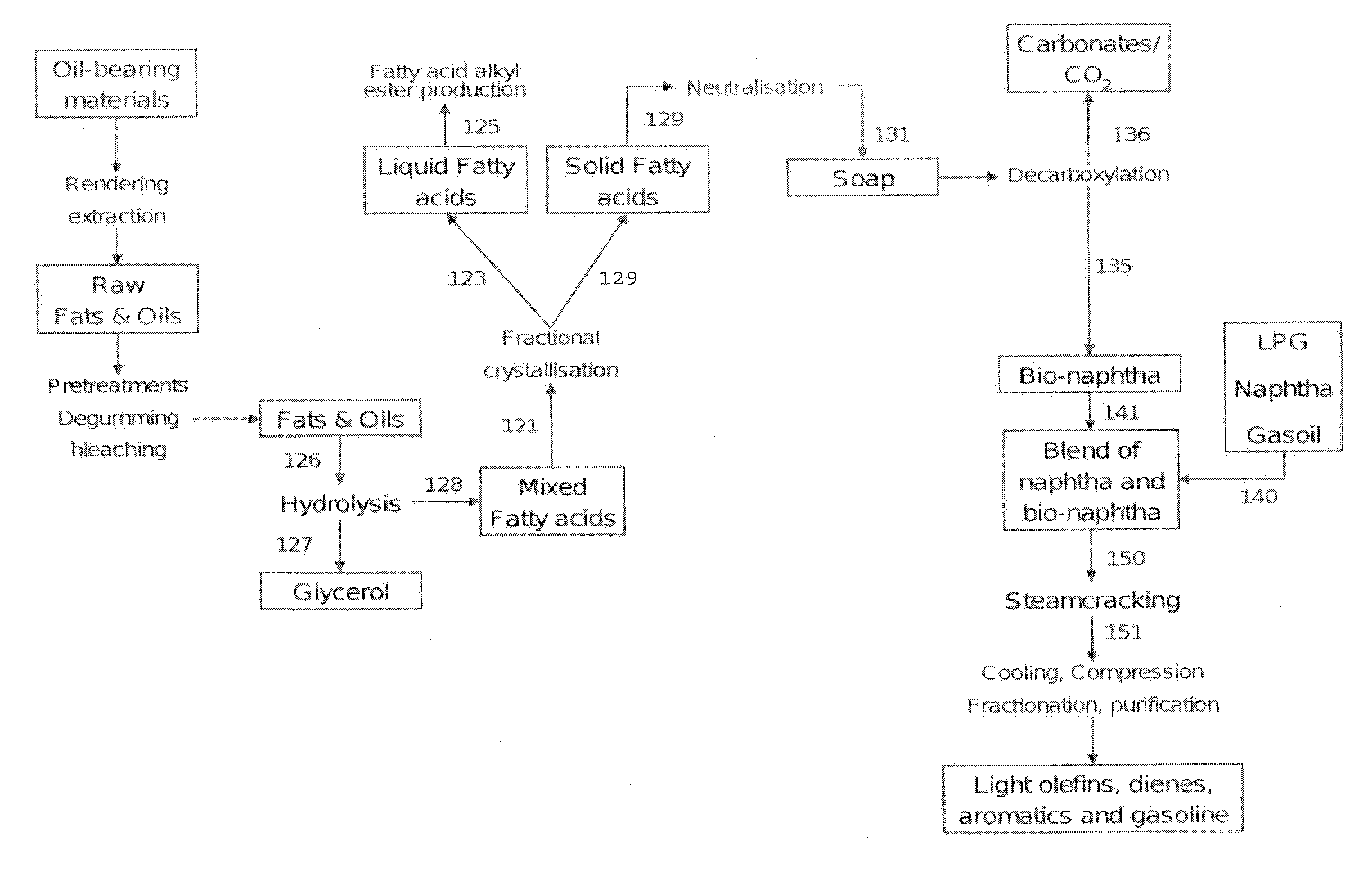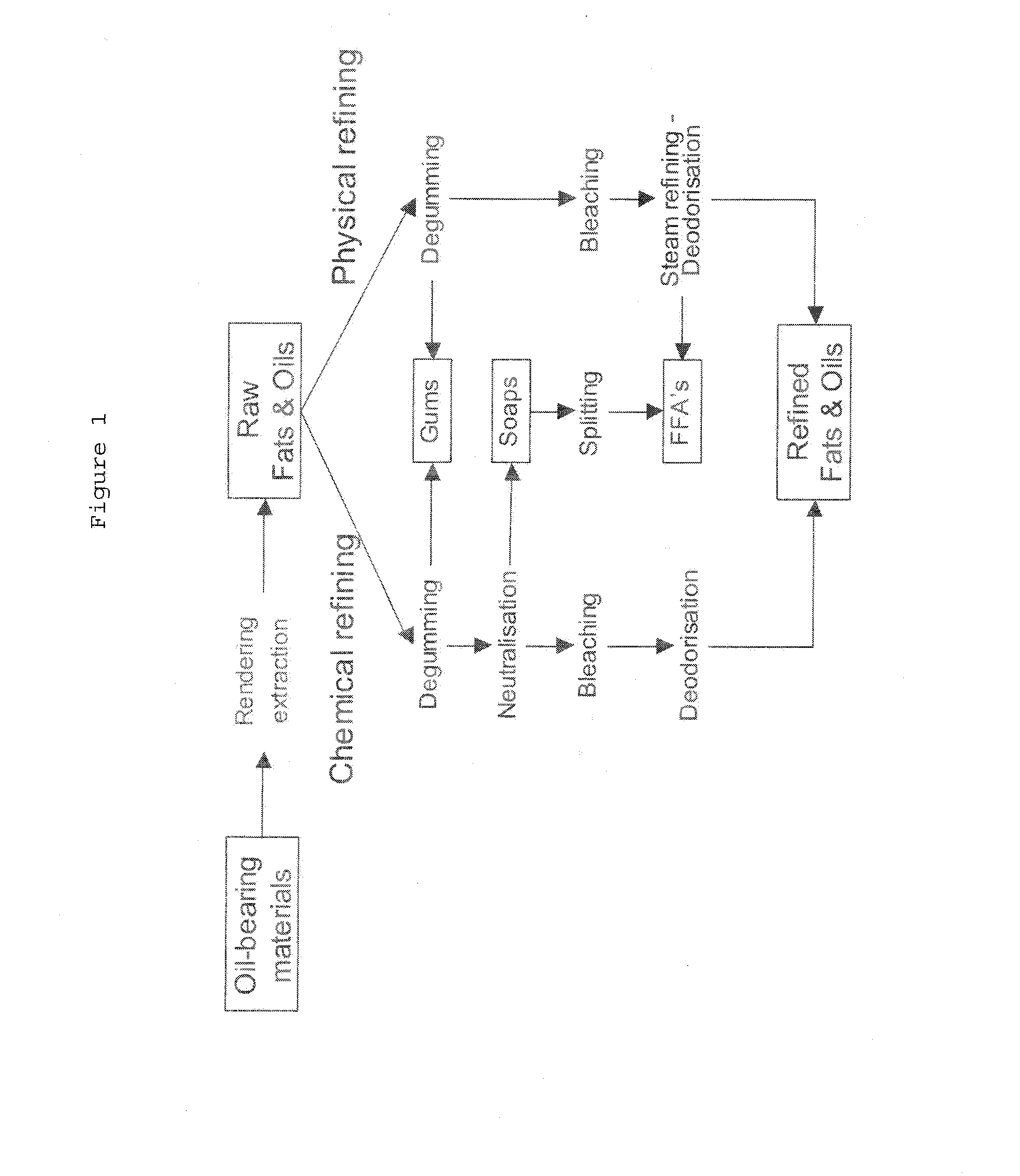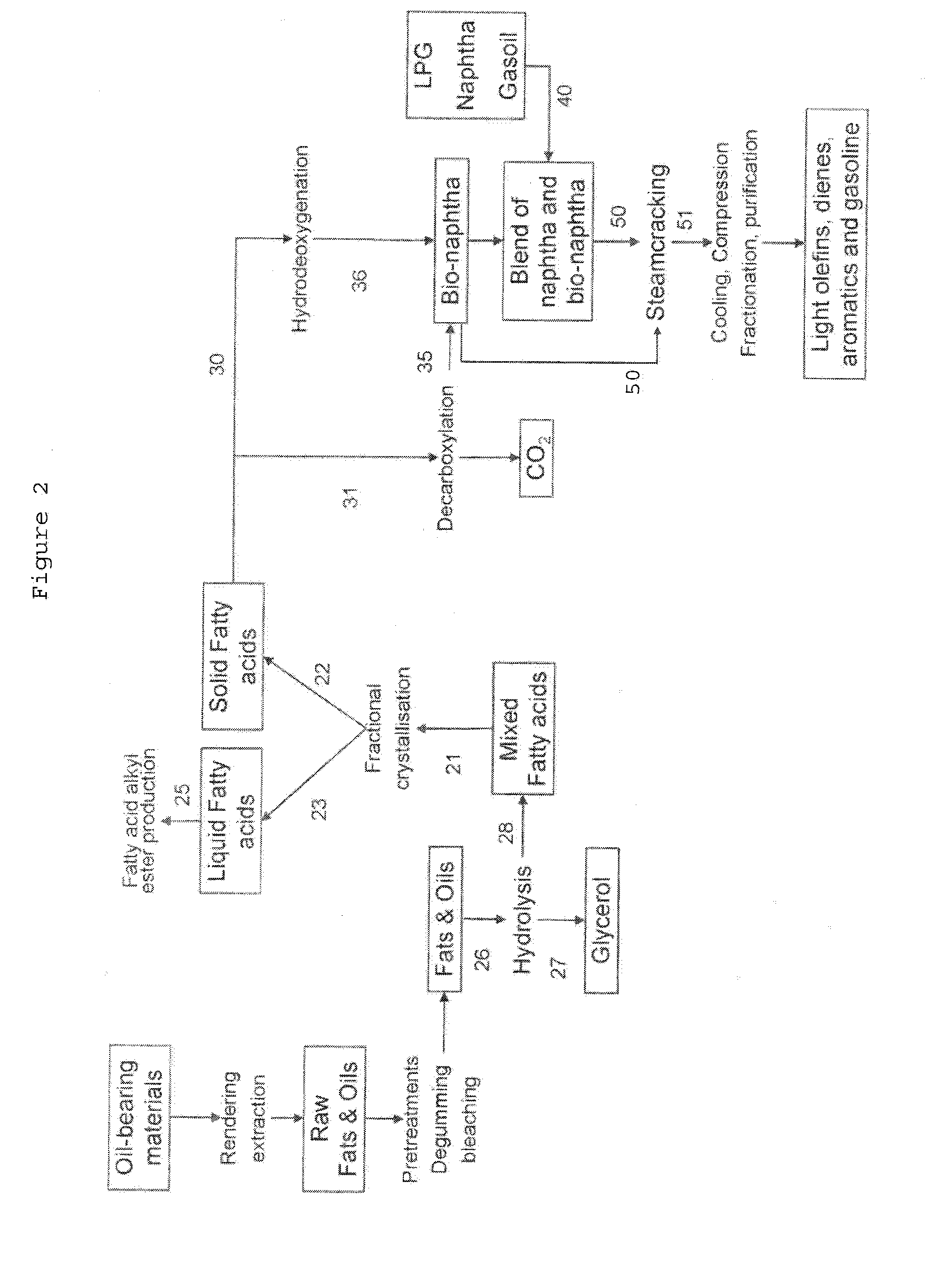Process for the Production of Bio-Naphtha from Complex Mixtures of Natural Occurring Fats & Oils
- Summary
- Abstract
- Description
- Claims
- Application Information
AI Technical Summary
Benefits of technology
Problems solved by technology
Method used
Image
Examples
examples
Exemple 1
[0147]Hydrodeoxygenation of a fatty acid feed has been evaluated under the following conditions:
[0148]In an isothermal reactor, 50 ml of a hydrotreating catalyst composed of Molybdenum and Nickel supported on alumina (prepared according to patent U.S. Pat. No. 6,280,610B1) was loaded, the catalyst dried and pre-sulfurised under standard conditions with straightrun gasoil with a initial boiling point of 187° C. and a final boiling point of 376° C. (a straight run gasoil is a gasoil cut obtained directly after distillation without any other treatment). This gasoil was doped with dimethyl di-sulphur (DMDS). The hydrodeoxygenation of fatty acid is done at:
[0149]LHSV=1 h−1
[0150]Inlet Temperature=320° C.
[0151]Outlet pressure=60 bars
[0152]H2 / oil ratio=1050 N1 / 1
[0153]Feedstock=oleic feed doped with 2.5 wt % DMDS
[0154]Table 4 shows a typical composition of the oleic feed.
[0155]The gas and liquid effluent are separated by means of a separator (gas / liquid) at atmospheric pressure. Ga...
example 2
[0159]Hydrodeoxygenation of a triglyceride feed has been evaluated under the following conditions:
[0160]In an isothermal reactor, 10 ml of a hydrotreating catalyst composed of Molybdenum and Nickel supported on alumina (KF848 obtained from Albemarle) was loaded, the catalyst dried and pre-sulfurised under standard conditions with straightrun gasoil doped with DMDS. The hydrodeoxygenation of rapeseed is done at:
[0161]LHSV=1 h−1
[0162]Inlet Temperature=320° C.
[0163]Outlet pressure=60 bars
[0164]H2 / oil ratio=630 N1 / 1
[0165]Feedstock=rapeseed doped with 1 wt % DMDS
[0166]Table 6 shows a typical composition of the rapeseed oil.
[0167]The gas and liquid effluent are separated by means of a separator (gas / liquid) at atmospheric pressure. Gases are sent to a p-GC analyzer and liquids are sent to a sampler. The mass balance is around 99% and all product weights are calculated for 100g of treated feed.
TABLE 6Typical composition of rapeseed oilComponentswt %tetradecanoate0.1hexadecenoate0.2hexadec...
example 3
[0171]n-Paraffins and conventional naphtha have been steamcracked under different severity conditions. Table 8 gives the results. It is evident from the results that such-obtained bio-naphtha are better feedstock for steamcracking compared to fossil naphtha.
[0172]Significant higher ethylene and propylene yields can be obtained whereas the methane make and the pyrolysis gasoline make is reduced with at least about 20%. The ultimate yield of HVC (High value Chemicals=H2+ethylene+propylene+butadiene+benzene) is above 70 wt %. Ethylene / Methane weight ratio is always above 3.
TABLE 8Naphthan-Decanen-C15n-C20P / E0.590.440.500.49COT812812812812S / HC0.350.350.350.35Summarywt % (dry)wt % (dry)wt % (dry)wt % (dry)Hydrogen0.870.660.590.57Methane14.7911.6710.6510.00Acetylene0.250.250.250.25Ethylene25.3938.8736.2435.82Ethane4.096.586.075.84Methyl-Acetylene0.290.210.220.22Propadiene0.210.150.160.16Propylene15.1017.2918.0817.63Propane0.510.730.690.66Vinyl-Acetylene0.040.040.040.04Butadiene4.615.966.8...
PUM
 Login to view more
Login to view more Abstract
Description
Claims
Application Information
 Login to view more
Login to view more - R&D Engineer
- R&D Manager
- IP Professional
- Industry Leading Data Capabilities
- Powerful AI technology
- Patent DNA Extraction
Browse by: Latest US Patents, China's latest patents, Technical Efficacy Thesaurus, Application Domain, Technology Topic.
© 2024 PatSnap. All rights reserved.Legal|Privacy policy|Modern Slavery Act Transparency Statement|Sitemap



